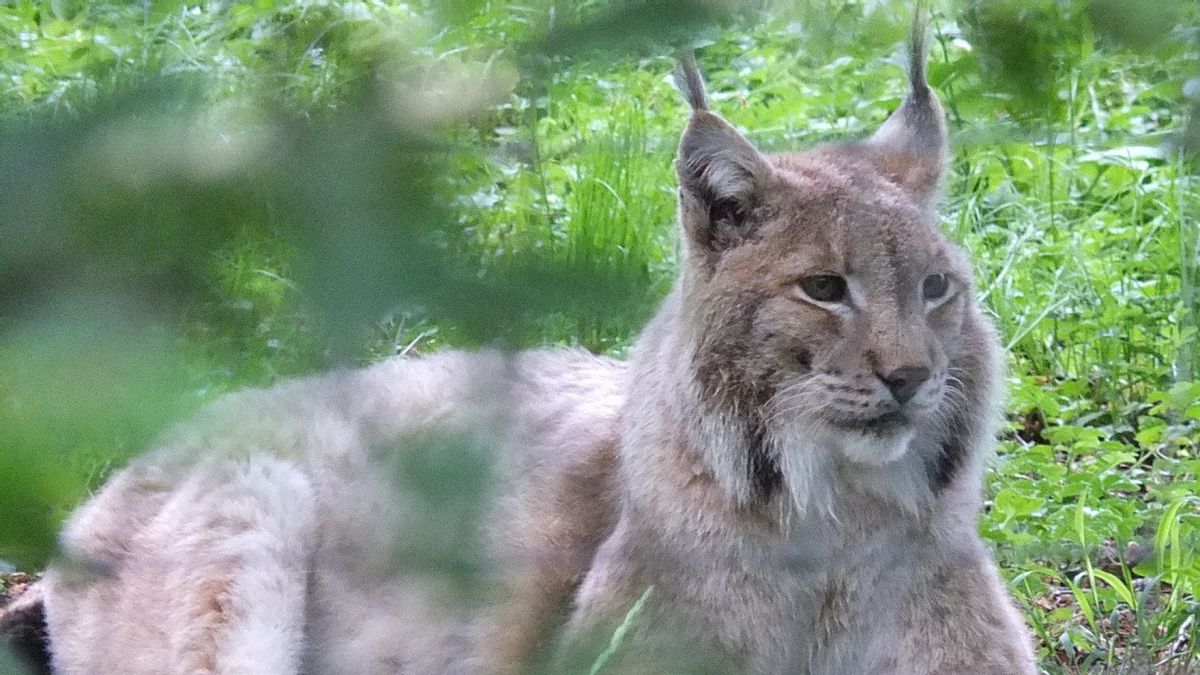JAKARTA - The Eurasian lynx is thought to have become extinct in England about 500 years ago. They were technically native to the island, but, due to hunting and habitat loss, their numbers declined until they eventually disappeared.
However, the lynx may return soon, as three Scottish wildlife charities are keen to try to 'return' the big cat in the Cairngorms and Argyll National Parks area.
The lynx is the third largest predator in Europe after the brown bear and the wolf. They are a key species meaning even a small population of these big cats can have a huge impact on the environment around them. Their ability to control wild deer, so that forests can grow, is of great interest to ecologists in Scotland.
"Scotland has more forest deer than any other European country, and their relentless exploration often prevents the healthy expansion and regeneration of our natural forests," said Steve Micklewright, chief executive of Rewilding Trees for Life.
In addition to cutting trees from their vegetation, deer also remove undergrowth in forests that provide habitat for birds such as nightingales and willow warblers.

"By preying on the roe deer, the lynx will restore an ecological process that has been lost for centuries, and provide a free and efficient deer management service," adds Micklewright.
Three charities, SCOTLAND: The Big Picture, Trees for Life and the Vincent Wildlife Trust launched a study in January, to investigate whether people in the Highlands are willing to live with big cats. Project partners realized that the only way for this scheme to work was to understand what people think about sharing their natural space with these predators.
"Lynx should not be forced on Scottish people. But it is also important to have an open discussion that recognizes that, against the backdrop of the global biodiversity crisis, there is an opportunity to bring back not only the charismatic culture of native species, but the lost ecological processes that it will restore. ," the three charities said in a statement.
Lynx are shy and solitary creatures. Roaming over large areas, they prefer wooded areas to catch their prey and make nests for their kittens. This species is found in a wide geographical range, stretching from France to the Himalayas. Although considered the least cared of by the IUCN, they have become rare in much of Western Europe.

Experts believe the remote Scottish Highlands can support around 400 feral cats. If the consultation is successful, the country will join a number of others working to expand the reach and number of lynxes across Europe.
However, one country that returned lost lynx has a cautionary tale for those who wish to do the same. It has issues that highlight the need to consult the Scottish public.
The Jura Mountains on the French-Swiss border are estimated to be home to about 150 big cats. Two-thirds of the French lynx population lived in the region after being reintroduced into the 1970s.
But on December 31 last year, the body of a lynx was found in the commune of Quingey. An autopsy report showed the lynx was shot and local officials suspect the shooting was carried out by poachers. Just one loss was a 'serious blow' to the population, but it wasn't the lynx's only shot in the past year.
"In 2020, this is indeed the third confirmed illegal lynx destruction after the one at the beginning of the year in the Haut-Rhin and Jura departments," said the Regional Directorate of Environment, Planning and Housing.

Despite the small numbers, conservationists believe this loss is preventing the population from stabilizing and the proportion of these big cats appears to be declining in France. The local non-profit Athénas Center posted an offer of a €1,000 reward for anyone with information about the 'illegal destruction' on their Facebook page.
The group says actions like this call into question their conservation efforts, and the impact on the Jura mountain lynx population seems appropriate.
To note, attacks on humans are almost unheard of, but there are risks to livestock. Farmers in Scotland have objected, citing compensation payments for more than 20,000 sheep lost to predators in Norway in 2016. Hunters usually object because if the lynx depletes the deer population there will be less for them to hunt.
Rewilding Europe, a group of about 70 different ecological organizations across the continent, has been working towards public acceptance of the lynx. Small and isolated animal populations have persisted in countries such as Slovenia, Poland and Germany.
Public support for territorial expansion and schemes to ensure their genetic diversity, is critical to survival. Life Lynx, a group that works in the Dinaric Alps, does education and publicity work in addition to its practical conservation efforts. The promise of local revenue from wildlife tours, celebrity ambassadors, and documentaries about the species is part of their arsenal being rebuilt.
It's insights like this that Scotland hopes for from its public consultations, how to build relationships between human communities and cat populations.
"Re-introducing the lynx will definitely bring challenges," explains Jenny MacPherson, who will lead the research for the Vincent Wildlife Trust.
"Lynx to Scotland will actively include stakeholders representing multiple perspectives, to come to meaningful conclusions about the level of support or tolerance for lynx, and therefore, the likelihood of a successful reintroduction in the future."
The English, Chinese, Japanese, Arabic, and French versions are automatically generated by the AI. So there may still be inaccuracies in translating, please always see Indonesian as our main language. (system supported by DigitalSiber.id)













